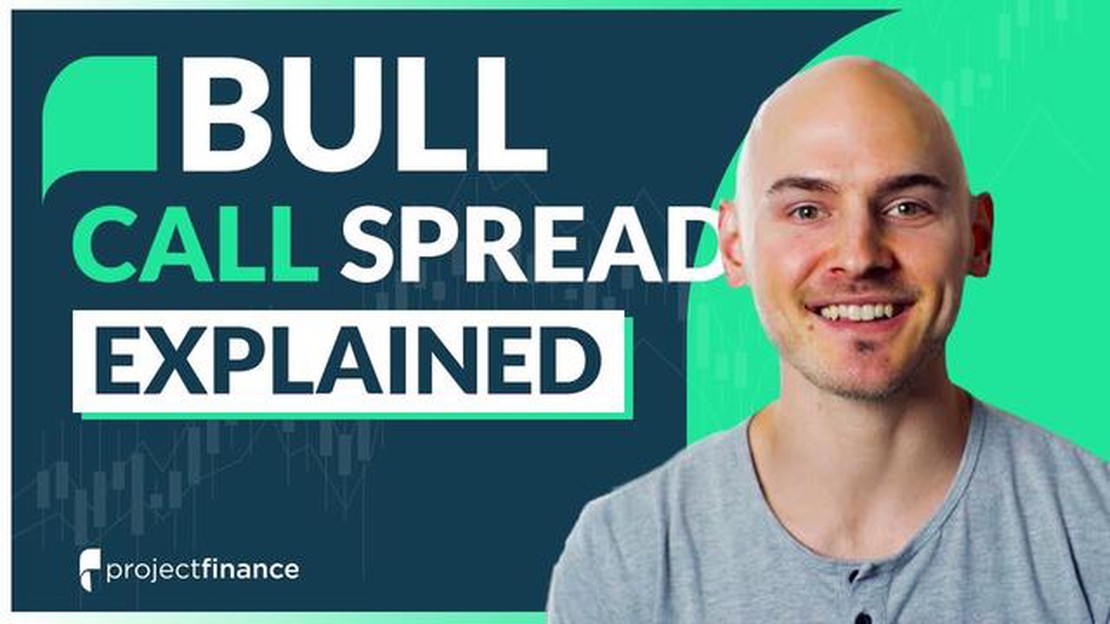Understanding Options on Credit Default Swaps (CDS): A Comprehensive Guide
Options on CDS: Exploring the Possibilities Options on Credit Default Swaps (CDS) are powerful financial instruments that can provide investors with …
Read Article
Call spread options are a popular investment strategy that allows traders to take advantage of both bullish and bearish market conditions. By combining the purchase of a call option and the sale of another call option with a higher strike price, traders can profit from the difference in premiums.
This complete guide will provide you with a comprehensive understanding of call spread options. We will discuss the mechanics of call spread options, the different types of call spreads, and the potential risks and rewards associated with this investment strategy.
To understand call spread options, it is important to have a basic knowledge of call options. A call option gives the buyer the right, but not the obligation, to buy the underlying asset at a predetermined price within a specified timeframe. Call spread options involve buying one call option and selling another call option with a higher strike price.
For example, let’s say you are bullish on a stock and believe its price will increase. You can purchase a call option with a strike price of $50 and simultaneously sell a call option with a strike price of $55. This creates a call spread, with the potential to profit both if the stock price rises moderately or stays below $55 at expiration.
Call spread options can be an effective strategy for managing risk and generating returns in various market conditions. However, like any investment strategy, it is important to thoroughly understand the mechanics and potential risks before engaging in call spread options trading.
Call spread options are a popular investment strategy used by both beginner and experienced traders. They allow investors to profit from price movements in a stock while simultaneously limiting their downside risk.
A call spread option involves buying one call option and selling another call option on the same stock with different strike prices. The call option being bought is typically closer to the current market price, while the call option being sold is further out-of-the-money.
The difference in strike prices between the two call options is known as the spread. The main purpose of a call spread option is to limit the investor’s potential losses while still allowing them to benefit from favorable price movements in the stock.
When the price of the underlying stock rises, the call option being bought will gain value, generating a profit for the investor. At the same time, the call option being sold will limit the potential gains as its value decreases.
If the price of the stock remains below the strike price of the call option being sold, both options will expire worthless. In this case, the investor would lose the premium paid for the call option being bought.
On the other hand, if the price of the stock rises above the strike price of the call option being sold, the investor will have limited their potential gains. However, they would have also limited their potential losses in case the stock price falls.
Call spread options offer a balance between risk and reward. They allow investors to take a position on a stock’s price movement while limiting both the potential gains and losses. This makes them an attractive strategy for those looking to manage their risk in the options market.
It’s important to note that call spread options can be customized to fit an investor’s risk tolerance and market outlook. By adjusting the strike prices and expiration dates, investors can tailor the strategy to their specific needs.
In conclusion, call spread options are a versatile investment strategy that can be used by investors of all experience levels. Understanding the basics of call spread options is important for those looking to navigate the options market and effectively manage risk while still benefiting from favorable price movements in a stock.
Call spread options are a popular trading strategy that involves buying and selling call options with different strike prices. This strategy offers several advantages and disadvantages that traders should consider before using it.
Read Also: Steps to Log into Your Old Scottrade Account - Easy Guide
Advantages:
2. Lower Cost: Call spread options require less capital compared to buying a single call option. This makes them more accessible for traders with smaller accounts, allowing them to participate in the options market without committing large amounts of capital. 3. Defined Profit Potential: Call spread options have a defined profit potential. The maximum profit is limited to the difference between the strike prices minus the net debit paid for the spread.
Read Also: How Much Start-Up Capital Do You Need for Trading?4. Risk Management: Call spread options allow traders to manage their risk by setting predetermined exit points. They can take profits or cut losses based on their risk tolerance and market conditions.
Disadvantages:
 3. Market Volatility: Call spread options are affected by market volatility. If the market becomes highly volatile, it can impact the value of the options, potentially leading to increased losses or reduced profits.
4. Limited Time: Call spread options are time-sensitive investments. As the expiration date approaches, the options may lose value if the underlying asset price does not move as expected. Traders need to consider the time decay factor and closely monitor their positions.
3. Market Volatility: Call spread options are affected by market volatility. If the market becomes highly volatile, it can impact the value of the options, potentially leading to increased losses or reduced profits.
4. Limited Time: Call spread options are time-sensitive investments. As the expiration date approaches, the options may lose value if the underlying asset price does not move as expected. Traders need to consider the time decay factor and closely monitor their positions.
In conclusion, call spread options offer advantages such as limited risk, lower cost, defined profit potential, and risk management. However, they also have disadvantages including limited profit potential, higher breakeven point, market volatility sensitivity, and time sensitivity. Traders should carefully analyze these factors and consider their risk tolerance and market outlook before using call spread options as part of their trading strategy.
A call spread option is a type of options trading strategy that involves buying a call option and simultaneously selling another call option with a different strike price. This strategy allows traders to potentially profit from both upward and downward movements in the underlying security.
A call spread option works by combining the purchase of a call option with the sale of another call option. The call option being bought has a lower strike price, while the call option being sold has a higher strike price. The goal is to profit from the difference in price between the two options, and the maximum potential profit is achieved if the underlying security’s price is at or above the higher strike price at expiration.
Using call spread options has several advantages. Firstly, it limits the potential loss compared to buying a single call option outright. Secondly, it can provide potential profit even if the underlying security’s price doesn’t increase significantly. Additionally, call spread options can offer a higher probability of success compared to other options trading strategies.
Yes, there are risks involved in trading call spread options. The main risk is that the underlying security’s price doesn’t move in the anticipated direction, resulting in potential losses. There is also the risk of both options expiring out of the money, causing a total loss of the premium paid. It’s important for traders to carefully consider the risks and manage their positions accordingly.
Call spread options can be used in various market conditions. They can be effective in bullish markets, as the goal is to profit from upward price movements in the underlying security. However, they can also be used in neutral or even slightly bearish markets, as the potential profit can still be realized if the underlying security’s price doesn’t increase significantly. Traders should assess the market conditions and select the appropriate option strategy accordingly.
Call spread options are a type of options strategy that involves buying and selling call options on the same underlying asset with different strike prices. This strategy allows traders to potentially profit from both bullish and bearish market conditions.
Options on CDS: Exploring the Possibilities Options on Credit Default Swaps (CDS) are powerful financial instruments that can provide investors with …
Read ArticleSetting Goals in Forex: A Step-by-Step Guide Setting goals is an essential part of achieving success in any endeavor, and trading in the foreign …
Read ArticleIs demo trading realistic? In the world of trading, demo accounts have become a popular tool for both beginner and experienced traders to practice …
Read ArticleIs BMO in Europe? Bank of Montreal (BMO), one of the leading financial institutions in Canada, is also present in Europe. With its extensive network …
Read ArticleWhat is Stock Vesting? Stock vesting is a crucial concept in the world of finance and investing. It refers to the process by which employees earn the …
Read ArticleMetaTrader 4 functionality in China: everything you need to know MetaTrader 4 is one of the most popular trading platforms in the world. It offers a …
Read Article